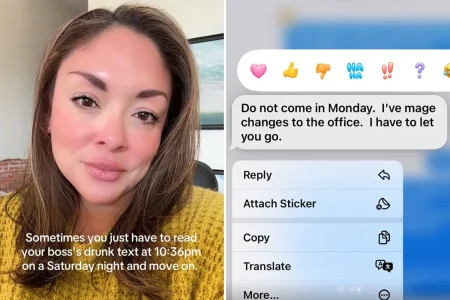The Art of Healthy Disagreement: Embracing Constructive Communication in Relationships
Relationship experts often remind us that occasional disagreements are not just normal but can be healthy signs of an engaged partnership. While conflicts are inevitable in any relationship, there’s a significant difference between destructive arguments and constructive disagreements. Recent research has illuminated effective approaches to navigating these challenging conversations, offering practical guidance for couples seeking to transform potential conflict into opportunities for deeper understanding and connection.
Harvard professor Julia Minson leads an impressive interdisciplinary team of psychologists, negotiation scholars, and computational linguists who have dedicated years to studying the dynamics of disagreement. Their groundbreaking research reveals a fundamental insight: the key to more productive disagreements lies not in trying to change your partner’s perspective but in adjusting your own communication approach. As Minson succinctly puts it, “One of the easiest behaviors to change is the words that you say.” This simple yet profound observation shifts the focus from attempting to control others to taking responsibility for our own contributions to difficult conversations. Their research has identified a specific communication style called “conversational receptiveness” that consistently leads to more positive outcomes during disagreements, providing couples with concrete linguistic tools they can implement immediately.
The research team developed the H.E.A.R. framework as an accessible way to remember and apply healthy communication techniques during disputes. The “H” encourages us to “hedge our claims” – maintaining confidence in our perspectives while acknowledging their inherent limitations. Rather than presenting opinions as absolute facts, this approach creates space for nuance and mutual exploration. The “E” reminds us to “emphasize agreement,” finding common ground before addressing differences. This crucial step establishes a foundation of shared values or goals that can sustain the relationship through the disagreement. Beginning a difficult conversation by identifying what you both agree on creates a collaborative rather than combative atmosphere.
Continuing with the framework, the “A” stands for “acknowledge the opposing perspective,” which involves demonstrating that you genuinely understand your partner’s viewpoint even when you disagree with it. This acknowledgment validates their experience without requiring you to abandon your own position. When people feel truly heard, they become more receptive to considering alternative perspectives. Finally, the “R” represents “reframing to the positive,” which involves consciously removing negative, definitive language from your communication. Replacing absolutes like “never” and “won’t” with more constructive phrasing opens possibilities rather than closing them off. This shift in language can transform the emotional tone of a disagreement, making resolution more achievable.
Before even employing these specific communication techniques, writer Rachel Bowie suggests an essential mindset shift that can prevent many arguments from escalating in the first place: “always assume good intentions.” This approach represents a fundamental choice to view your partner charitably rather than adversarially. When your spouse does something that frustrates or disappoints you, pausing to consider benign explanations before jumping to negative conclusions can dramatically change the trajectory of your interaction. As Bowie explains, this practice “serves as a reminder that we are, in fact, in tricky situations together, allowing us to reframe a messy moment and reminding me to pause, back up and put myself in my spouse’s shoes.” This perspective encourages questions like, “OK, before I blow my lid off, perhaps there’s more to the story here? Maybe it was a hard afternoon. Maybe the baby started crying halfway into a game of Trouble. Maybe my husband deserves a bit of grace.”
The ultimate goal of these approaches isn’t to eliminate disagreements but to transform how we navigate them. As Bowie emphasizes, effective communication is “more about making room for productive and thoughtful conversation, reducing conflict and achieving an improved way forward together.” When couples combine the conversational receptiveness techniques of the H.E.A.R. framework with the compassionate mindset of assuming good intentions, they create conditions where disagreements can actually strengthen rather than weaken their bond. This integration of practical communication skills with an orientation of goodwill toward one’s partner offers a pathway to more fulfilling relationships – not because conflicts disappear, but because they become opportunities for deeper understanding, mutual growth, and renewed connection. By focusing on changing our own communication patterns rather than trying to change our partners, we discover that the quality of our disagreements often determines the quality of our relationships.















